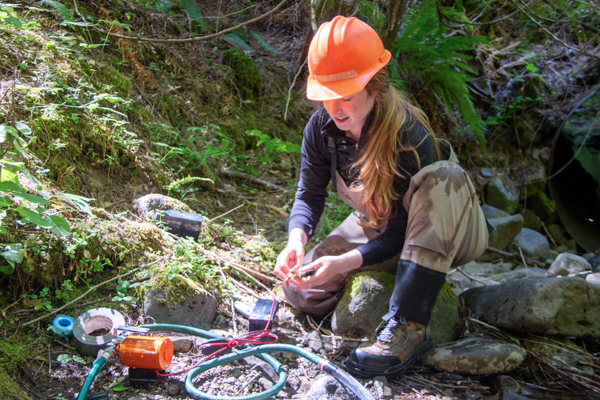Climate change is expected to increase the frequency and severity of droughts, with headwater streams being particularly vulnerable due to low water volume. These changes in stream conditions can impact aquatic species differently based on their physiology and habitat needs. Using a before–after control-impact (BACI) design, this study examined how reduced flow and elevated stream temperature affect the two apex dominant predators in headwater streams—cutthroat trout (Oncorhynchus clarkii clarkii) and coastal giant salamanders (Dicamptodon tenebrosus). The findings reveal different responses with relative increases in fish biomass in the warmed reach (+0.44 C increase in max temperature) and relative decreases in fish biomass in the low-flow reach. In contrast, salamander biomass increased in the low flow reach relative to the reference site and decreased in the warmed reach relative to the reference site. Overall these results suggest that future shifts in community dynamics may favor trout under warmer conditions and salamanders under drier ones.
Maffia, Madelyn, Allison Swartz, Catalina Segura, and Dana Warren. 2025. “Contrasting Apex Predator Responses to Experimentally Reduced Flow and Increased Temperature in a Headwater Stream.” Ecosphere 16(6): e70293. https://doi.org/10.1002/ecs2.70293

